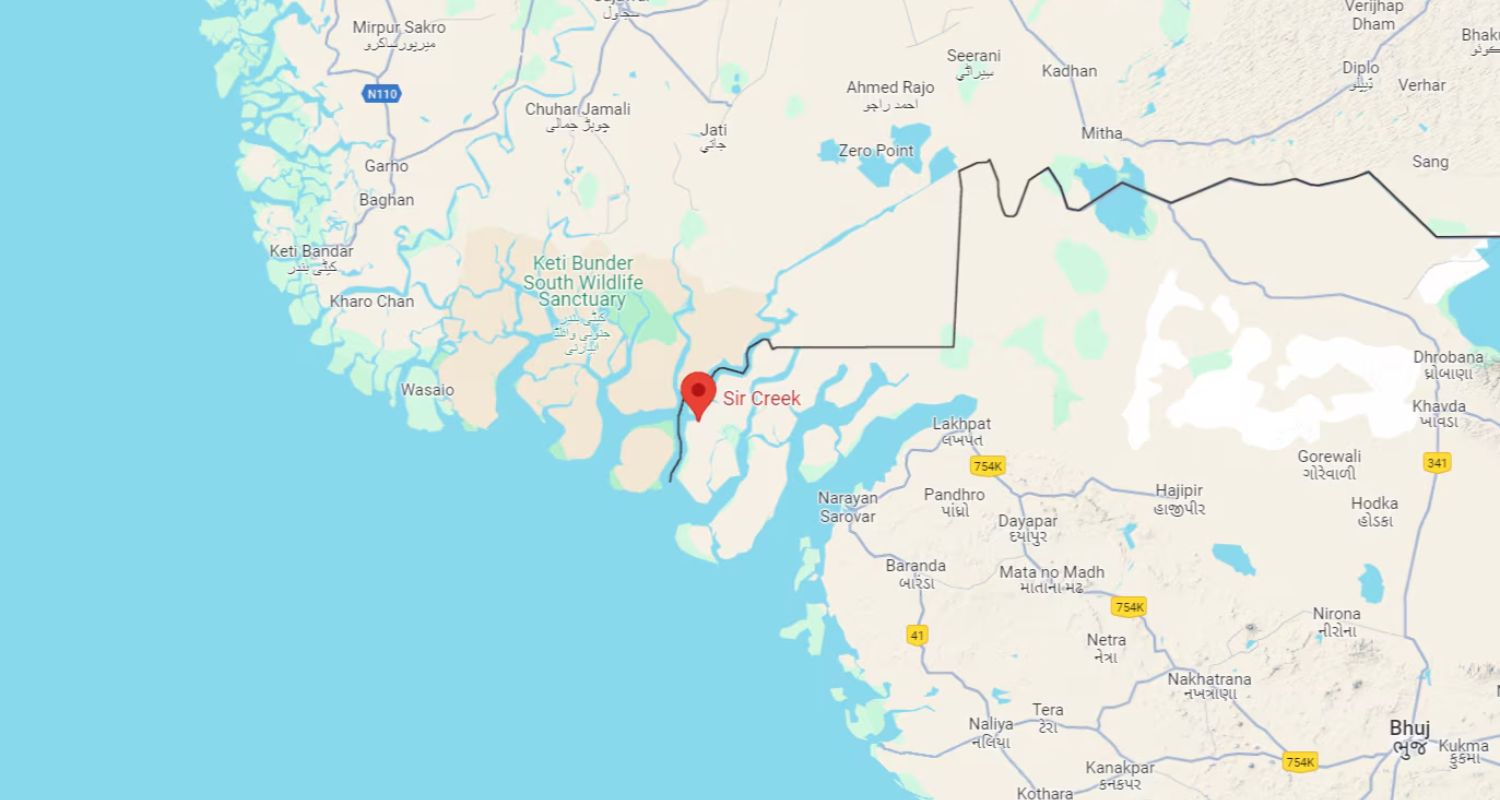Prime Minister Narendra Modi celebrated Diwali with the brave jawans stationed at Sir Creek, a contested area along the Indo-Pak border in Gujarat's Kutch district. Amid Diwali festivities, Modi visited this disputed border region to show solidarity and appreciation for the armed forces, sharing sweets and best wishes with personnel from the Border Security Force (BSF), Army, Navy, and Air Force.
Sir Creek, a 96-kilometre tidal estuary, is situated between India’s Gujarat state and Pakistan’s Sindh province. This estuary stretches out into the Arabian Sea, marking a rough natural divide between the Sindh and Kutch regions.
Named after a British colonial representative, Sir Creek is not just a point of contention between the two nations but is also one of Asia's richest fishing grounds. Additionally, it is speculated to contain significant, untapped oil and gas reserves, adding economic importance to its strategic relevance.

The terrain at Sir Creek presents unique challenges. Official sources highlight that the area endures extreme temperature swings, with scorching days in the summer and icy nights in the winter, making it a difficult environment for the stationed jawans.
Prime Minister Modi’s visit to such a remote and rugged region underscores his commitment to honouring the resilience and sacrifices of India’s armed forces, especially during festival times.
The dispute over Sir Creek can be traced back to the 1914 Bombay government resolution, which outlined a boundary to separate Sindh from the Kutch region.
According to Paragraph 9 of the resolution, the border was set "to the east of the Creek," implying that Sir Creek belonged to Sindh, which, after 1947, became part of Pakistan.
The partition of British India turned this local boundary dispute into a contentious international issue that requires resolution under the principles of international maritime law.
This boundary disagreement primarily revolves around the "Thalweg principle" in maritime law. According to this principle, the border between two nations along a waterway should ideally lie in the middle of the navigable channel.
India, therefore, argues that the boundary in Sir Creek should be drawn along the midline, citing evidence that Sir Creek remains navigable during high tide. On the other hand, Pakistan maintains that Sir Creek is not navigable, which would nullify the application of the Thalweg principle in this case.
India has also cited Paragraph 10 of the 1914 resolution, which confirms that the creek is navigable “most of the year.” By referencing this, India argues that a middle-line boundary is justified, based on international norms. Pakistan, however, interprets the resolution differently, leading to an enduring disagreement.
Efforts to resolve the Sir Creek dispute date back to the 1960s. After the 1965 Indo-Pak war, British Prime Minister Harold Wilson intervened, urging both nations to establish a tribunal to address the issue.
The tribunal's decision, however, only provided a partial solution, granting around 10 percent of the disputed area to Pakistan, leaving the core of the dispute unresolved.
Since then, India and Pakistan have held multiple rounds of negotiations, with 12 rounds of formal discussions up to 2012. Despite the frequent engagement, both nations remain at an impasse on the issue. The combination of strategic, economic, and territorial concerns complicates the matter further, making it a sensitive and complex border dispute.
Sir Creek’s significance extends beyond its rich marine resources. Its location along the western border of India provides strategic importance, as any shift in boundary lines could influence control over the Arabian Sea routes. Control over Sir Creek and adjacent waters also impacts access to potential natural resources, heightening the stakes in this territorial dispute.
Furthermore, the estuary is an essential fishing area for both Indian and Pakistani communities. Fishermen from both countries have inadvertently crossed into each other's claimed territories, often leading to detentions.
These incidents have made Sir Creek a politically charged area, as any heightened tensions have repercussions on diplomatic relations and the livelihood of local communities.
Prime Minister Modi’s Diwali visit to Sir Creek is part of his long-standing tradition of celebrating the festival with the armed forces. This gesture of solidarity dates back to his earlier Diwali celebrations with jawans in regions like the Gurez Valley along the Line of Control in Jammu and Kashmir, and even in the icy heights of Siachen in 2014.
Modi's interactions with the troops consistently emphasise respect and appreciation for their role in safeguarding the nation, often under challenging conditions.
This year, his presence in Sir Creek carried additional significance, as Diwali celebrations coincided with recent disengagement efforts between Indian and Chinese troops along the Line of Actual Control (LAC) in eastern Ladakh. In a goodwill gesture, Indian and Chinese troops exchanged sweets at various LAC points, signalling a thaw in relations following their recent stand-off.
Modi’s Diwali celebrations with the BSF at Sir Creek highlight his focus on unity and morale-building among India’s security forces. By marking the festival in such a contentious yet significant region, he reinforces India’s commitment to territorial integrity while fostering camaraderie with those on the frontlines.


